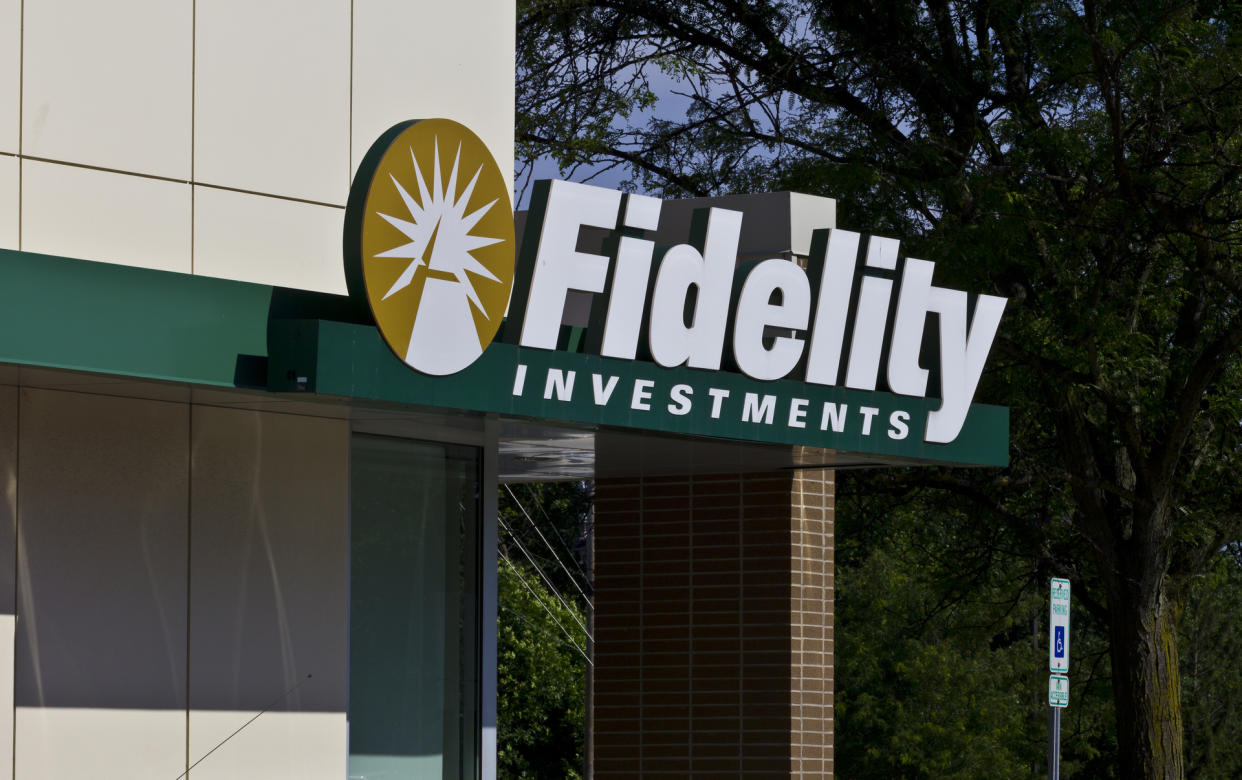Fidelity Looks to Improve Financial Literacy With New ‘Metaverse Experience’

Financial behemoth Fidelity Investments launched a gamified financial education platform in the metaverse, to attract the next generation of customers. The platform, launched in Decentraland, comes on the heels of the brokerage firm’s launch of its Fidelity Metaverse exchange-traded fund (ETF), FMET.
Metaverse Real Estate: The Where, Why & How Much of Investing in a Virtual World
Find: 7 Best Metaverse Stocks To Invest In
“Fidelity is always looking for ways to help people learn more about their finances. Bringing an immersive educational experience to the metaverse was a logical next step in our effort to reach the next generation in all the places they go,” David Dintenfass, CMO, Head of Emerging Customers at Fidelity, told GOBankingRates.
The Fidelity Stack, which was built in Decentraland, is an eight-story, open building with no walls “to optimize the view from within and outside the space,” Kathryn Condon, head of marketing channels and emerging platforms at Fidelity, told GOBankingRates. She added that there is a dance floor on the lobby level and the roof where avatars can take a break and enjoy the fun of socializing with other avatars. As they travel from floor to floor, users encounter educational components with explainers on common financial topics. Some floors offer stairs, while others offer teleporter devices or elevators to experience the full potential of virtual travel in Decentraland.
In the Invest Quest at The Fidelity Stack, users navigate through a multi-floor virtual space while collecting glowing orbs and learning about stocks, mutual funds, and ETFs, including the new Fidelity Metaverse ETF, Condon added.
“The goal of the Invest Quest at The Fidelity Stack is to bring education on financial topics to life in new and unique ways. As users traverse the space, they encounter educational elements focused on stocks, mutual funds, ETFs, and the components of the new Fidelity Metaverse ETF,” Condon said.
Asked about what prompted the idea, Condon said that Fidelity has a legacy of innovation and that the firm’s journey into the metaverse began earlier this year, with a live virtual discussion on cryptocurrencies and the metaverse.
Condon said that since launching, they added a “POAP” station (Proof Of Attendance Protocol) where visitors can claim a badge for having explored The Fidelity Stack. Asked what further features will be added, Condon said that “we will continue to learn from how users engage with the space.”
Saro McKenna, co-founder of NFT metaverse game Alien Worlds, told GOBankingRates that “it’s telling that after basically ignoring or outright dismissing the Web3 world and all its rapid development, established institutions like Fidelity are now coming into the space with immense amounts of energy.”
“We welcome this! It’s clear that the Web2 world – the FAANGs, as they call them – have hit their peak when it comes to their traditional offerings, and that new growth will be driven by Web3 innovation. By tapping into Web3, Fidelity can increase their exposure to new, high growth asset classes,” McKenna said. “I suspect a huge aspect of these emerging metaverse worlds will be the financialization of everything, including games.”
According to McKenna, it’s yet unclear how such games will evolve, or how their incentive structures will be able to attract millions of users, but the amount of creativity in the Web3 space – particularly when it comes to play-to-earn games and NFTs – is just immense.
“The people at Fidelity, to their credit, see this opportunity. So the potential for them to be leaders in this space is very high,” McKenna added.
The sentiment was echoed by several experts, who view Fidelity’s move as a harbinger of things to come for the financial world.
In what many refer to as “a virtual gold rush,” in March, banking giant HSBC set a stake in the metaverse through the purchase of a plot of virtual land, becoming the first global financial services provider to enter The Sandbox. The move followed that of JPMorgan, which in February became the first bank to open a lounge in Decentraland, as GOBankingRates previously reported.
Toni Caradonna, CTO of Cross the Ages, told GOBankingRates that he gives Fidelity “props for being a little more creative than most major companies have been in their metaverse launches.”
“Gameifiying their metaverse location, at least to a certain extent, will make it more appealing,” he said. “One of the best things about the metaverse is that nothing ever needs to be boring, even learning about financial instruments. I suspect that other brands will pick up on this and make their metaverse offerings more interesting and start to really take advantage of being in a virtual world where anything is possible.”
In terms of the Metaverse ETF Fidelity which was launched on April 21, the firm said it can help investors invest in the evolution and future of the internet by providing access to companies that develop, manufacture, distribute, or sell products or services related to establishing and enabling the metaverse, such as computing hardware and components, digital infrastructure, design and engineering software, gaming technology and software, web development and content services, and smartphone and wearable technology.
POLL: Do You Think States Should Suspend Their Gas Taxes?
Discover: 50 Ways You’re Throwing Money Away
Greg Friedman, Head of ETF Management and Strategy, told GOBankingRates that “we’re seeing interest in thematic investing from a wide range of investors, particularly young investors, as they look for opportunities to connect their investments to their personal interests, beliefs and values.”
He added that this new passively managed ETF will have an expense ratio of 0.39%, the lowest available for an ETF of its kind.
More From GOBankingRates
This article originally appeared on GOBankingRates.com: Fidelity Looks to Improve Financial Literacy With New ‘Metaverse Experience’
